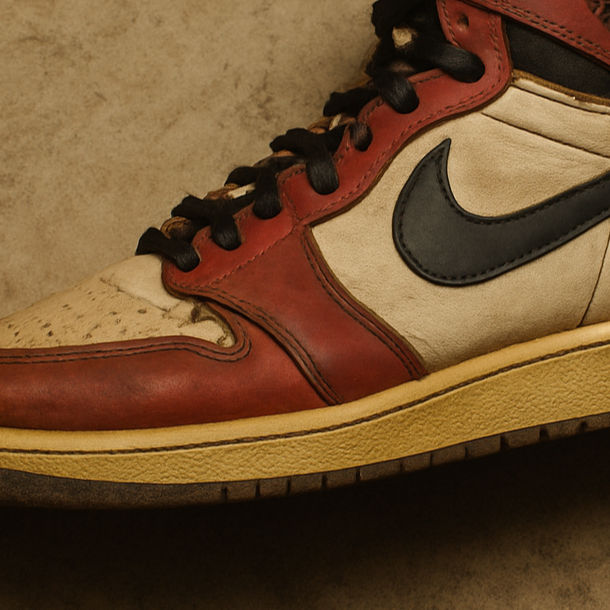The Story of Female Sneakerheads and Their Impact on the Industry
- SAFEHAUS

- 1 day ago
- 3 min read

Introduction
For decades, sneaker culture was seen as a male-dominated arena. But behind the scenes—and increasingly front and center—female sneakerheads were quietly building collections, setting trends, and influencing design. Today, their impact is undeniable. From shaping collaborations to launching their own brands, women are rewriting the rules of the sneaker industry.
At SafeHaus, we recognize how important these shifts are—not just for brands, but for the broader community our directory and forums serve. Let's dive into the evolution and future of female sneaker culture.
The Early Days: Collecting in the Shadows
During the 80s and 90s, sneaker culture exploded alongside hip-hop, basketball, and skateboarding. However, mainstream marketing overwhelmingly targeted men. Early female sneaker collectors often had to navigate smaller size runs, limited styles, and less representation in campaigns.
Yet despite the challenges, women like April Walker (founder of Walker Wear) and Miss Info (hip-hop journalist and sneaker collector) were quietly making waves. Limited access didn't limit passion—it only fueled it.
Key takeaway: Women were always part of the foundation. Brands just weren't paying attention yet.
The Breakthrough: Nike’s and Reebok’s Early Moves
In the late 90s and early 2000s, brands started to notice. Nike released women-specific models like the Air Max Plus WMNS and collaborations with artists like Missy Elliott via Reebok. However, many early "women's releases" fell flat, focusing too much on pastel colors and shrinking existing designs without respecting the culture.
The true shift? When brands moved from simply "feminizing" sneakers to involving women in storytelling, design, and branding itself.
Pioneering moments:
Nike’s "City Attack" series in Japan, which catered authentically to female collectors.
The rise of niche shops like KITH Women and female-run boutiques such as Extra Butter showcasing women's streetwear and sneakers.
Today's Landscape: Female-Led Collaborations and Innovation
Fast-forward to now: women aren’t just consumers; they’re collaborators, designers, and industry powerhouses.
Examples of the shift:
Aleali May’s luxurious takes on Jordan 1s, blending LA street style with high fashion.
Melody Ehsani’s collaborations with Reebok and Jordan Brand, focusing on empowerment.
Yoon Ahn (of Ambush) reimagining Nike Dunks with bold futurism.
These aren’t surface-level projects—they’re reshaping what sneakers mean and who they’re for.
SafeHaus Tip: Our community forums often feature discussions about female-led drops and releases. Stay connected so you don't miss rising collaborations making history.
The Data Doesn’t Lie: The Growing Power of Female Consumers
Women now represent over 30% of all sneaker purchases in North America.
Female-led sneaker collaborations often sell out faster than male counterparts, according to resale data.
More sneaker customization and restoration services—like the ones listed on SafeHaus—are expanding women's offerings.
Brands are finally realizing that ignoring female sneakerheads isn’t just bad optics—it’s bad business.
Challenges That Remain
While the progress is undeniable, the fight for true equality in sneaker culture isn’t over:
Many releases still default to men’s sizing and designs.
Female collectors often face gatekeeping in online spaces and forums.
Pricing disparities and limited stock for extended women’s sizes persist.
That’s why communities like SafeHaus, with open forums and knowledgeable retailer directories, are so critical: creating inclusive spaces where every voice matters.
What’s Next?
Expect even bigger moves from female sneakerheads. Here's what’s brewing:
Female-founded sneaker brands will rise and rival major players.
Hyper-local collaborations with grassroots female communities.
AI-driven customization platforms tailored specifically for women's tastes and sizes.
Cross-industry partnerships, merging sneakers with sectors like wellness, activism, and sustainability.
Final Thoughts:
The story of female sneakerheads isn’t just a subplot in sneaker culture—it’s a central chapter still being written. Their influence challenges brands to innovate smarter, create more authentically, and build communities that feel genuinely inclusive.
At SafeHaus, we're proud to be part of that evolution—connecting sneakerheads of all kinds to restoration experts, trusted retailers, and a culture-forward community.
The future? It’s looking more diverse, powerful, and stylish than ever.



Comments